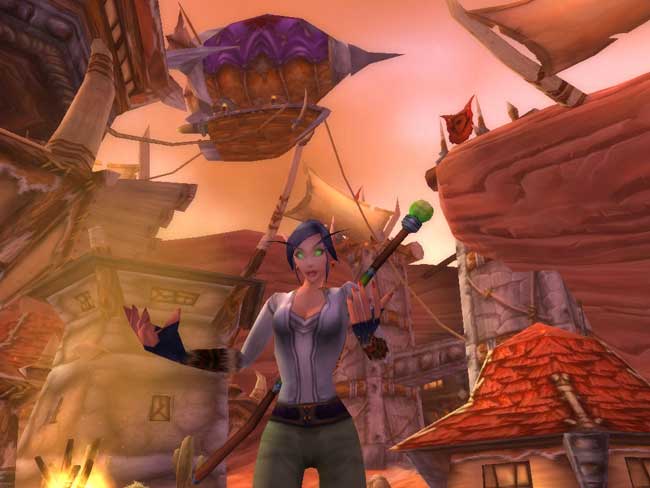Video Games Lack Female and Minority Characters

Good luck finding females, Latinos, Native Americans, children or the elderly among the best-selling video games of recent years.
The biggest census of video game characters ever conducted has found those groups mostly missing in action.
The lack of diverse playable characters in video games could make a serious impression among gamers and the broader U.S. population. A 2008 study by the Pew Internet Project found that almost all U.S. kids and teens play video games, along with a majority of young adults and almost half of all adults.
Female and Latino gamers in particular would have a hard time finding their virtual counterparts, despite each representing major players of video games. That suggests video game developers could have overlooked a hugely underserved group of customers, especially if they wrongly assume that the average video gamer remains a white male.
In terms of what game makers produce, "I'm the target audience, a white guy in my 30s," said Dmitri Williams, a communications researcher at the University of Southern California who headed the virtual census. "But the country doesn't look like me anymore."
Counting virtual heads
Williams and his colleagues set out to survey the top 150 bestselling games on nine major video game platforms, including the Xbox 360 and Playstation 2. The 2005-2006 data does not include the later launches of platforms such as the Nintendo Wii and Playstation 3, and does not count first-person shooters and games where playable characters are never seen or cannot be identified as human. The findings were released last week.
Get the world’s most fascinating discoveries delivered straight to your inbox.
The researchers wanted to improve on previous studies by looking at representation among video game characters in terms of games sold, rather than just games made. That means characters in a top-selling game such as "Madden NFL" counted more in the study than characters from less popular games.
Results proved eerily similar to that of an earlier study of television characters, which showed 82.9 percent white, 2.6 percent Latino, 11.4 percent black and 2.6 percent Asian characters. Both video game and television characters seriously underrepresented Latinos and Native Americans compared to the actual U.S. population, as well as children and the elderly.
However, only video games showed a far greater imbalance for females, who made up just 15 percent of video game characters.
"There are a lot more women in the television industry; besides the female audience is widely recognized in its importance for TV," Williams told LiveScience. "The game industry has not focused on women, even though women are 38 percent of all players."
Invisible minorities
The lack of female characters did not come as a huge shock, given the video game industry's past. What did surprise Williams was the glaring lack of Latino characters at just 2 percent, even though Latinos make up 12.5 percent of gamers.
"Studies of Latino children show they play more per day than white children," Williams said. "They're a minority, but very large minority."
The video game census did not examine the causes behind the numbers, but Williams found an interesting parallel in the demographics of those who make games and video game characters. Game developers who tend to be white males may tend to skew the video game characters they create toward white males, and especially playable characters.
That trend could also explain the proportion of playable female characters, which strongly resembles the proportion of female game developers.
Only African Americans proved the exception to this, given their relatively high representation among video game characters compared to video game developers. But their numbers dropped steeply outside of virtual athletes in sports games, with many remaining characters representing gangsters and street people in games such as "Grand Theft Auto" and "50 Cent Bulletproof."
"If I was African American, I'd be displeased with the poor quality of my portrayals," Williams said. "If I was Hispanic, I'd be displeased with my lack of portrayal."
The imbalanced depiction of minorities in video games should prove far more troubling than the hyped racism controversy last year over "Resident Evil 5." That game may have even taken a fairly nuanced approach to issues of race and politics, according to one expert interviewed by LiveScience.
What players want
There's hope yet for video games. Williams noted that the census data has already fallen behind by several years, and also pointed to the growing number of video games that emphasize character customization. Such options are especially common among massively multiplayer online games, of which the census only included the popular "World of Warcraft."
"The more player control there is, the more likely people will make characters that look like them — or that they want to look like," Williams said.
What players want in their characters remains an unanswered question. Even minority kids may prefer creating idealized characters which resemble the mainstream of American society. Besides, the stunning lack of both children and elderly people in video games also hints at a preference for characters in the prime of their lives.
Williams found that the video game industry actually did make games with characters more representative of the real world, but the bestselling games turned out as those with the most imbalanced portrayals. That could mean gamers prefer the idealized, mainstream video game characters, or that video game developers sink their best resources into games which happen to feature such imbalanced portrayals.
Either way, this all suggests a vast array of untouched video game stories featuring females and minorities. And the video game market has yet to tap this business opportunity.
"You could leave out the morality entirely and say 'I don't care about who is being underserved,'" Williams said. "Just think about it as a business proposition and a missed opportunity."
- Video Gamers Hooked for Life
- Video - Entering the World of Warcraft
- Video Game News & Reviews



